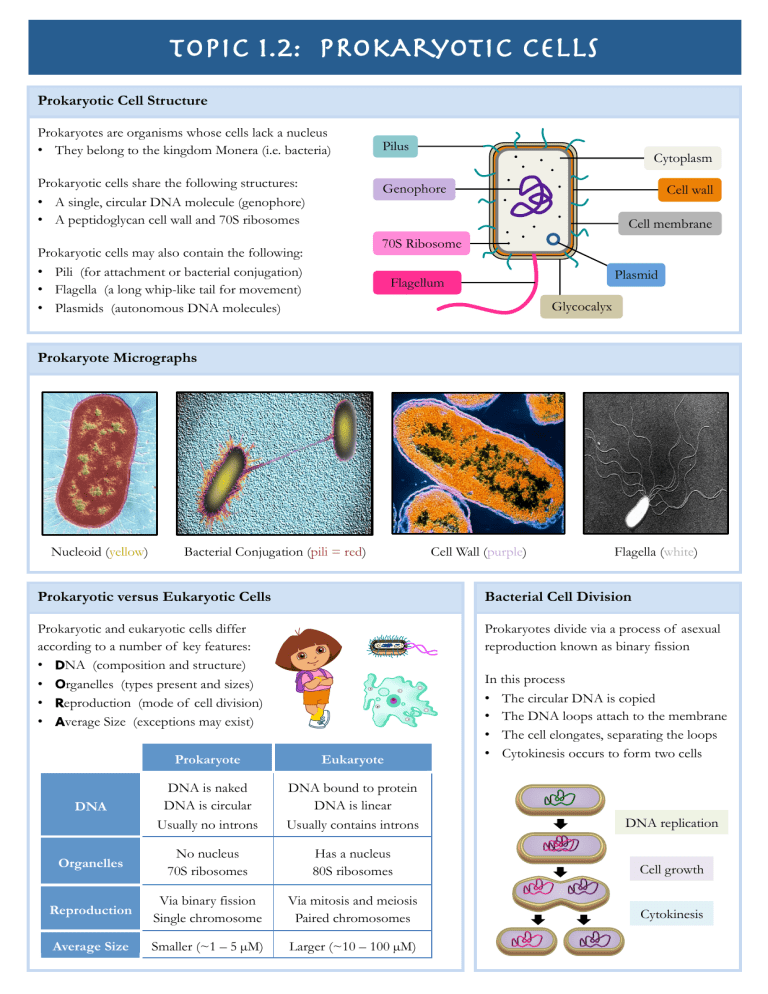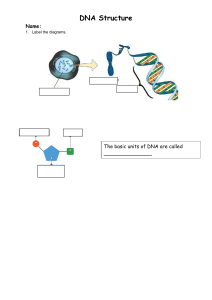
Topic 1.2: PRokAryotic Cells Prokaryotic Cell Structure Prokaryotes are organisms whose cells lack a nucleus • They belong to the kingdom Monera (i.e. bacteria) Prokaryotic cells share the following structures: • A single, circular DNA molecule (genophore) • A peptidoglycan cell wall and 70S ribosomes Pilus Cytoplasm Genophore Cell wall Cell membrane 70S Ribosome Prokaryotic cells may also contain the following: • Pili (for attachment or bacterial conjugation) • Flagella (a long whip-like tail for movement) • Plasmids (autonomous DNA molecules) Plasmid Flagellum Glycocalyx Prokaryote Micrographs Nucleoid (yellow) Bacterial Conjugation (pili = red) Cell Wall (purple) Flagella (white) Prokaryotic versus Eukaryotic Cells Bacterial Cell Division Prokaryotic and eukaryotic cells differ according to a number of key features: • DNA (composition and structure) • Organelles (types present and sizes) • Reproduction (mode of cell division) • Average Size (exceptions may exist) Prokaryotes divide via a process of asexual reproduction known as binary fission In this process • The circular DNA is copied • The DNA loops attach to the membrane • The cell elongates, separating the loops • Cytokinesis occurs to form two cells Prokaryote Eukaryote DNA is naked DNA is circular Usually no introns DNA bound to protein DNA is linear Usually contains introns DNA replication Organelles No nucleus 70S ribosomes Has a nucleus 80S ribosomes Cell growth Reproduction Via binary fission Single chromosome Via mitosis and meiosis Paired chromosomes Cytokinesis Average Size Smaller (~1 – 5 µM) Larger (~10 – 100 µM) DNA


